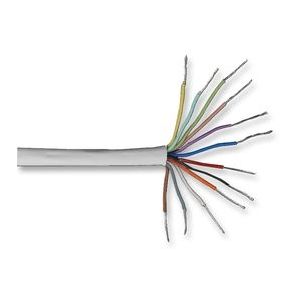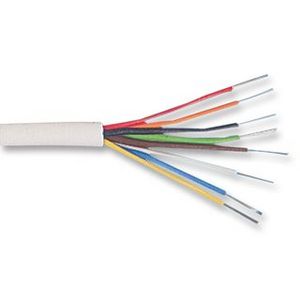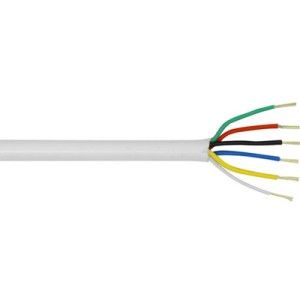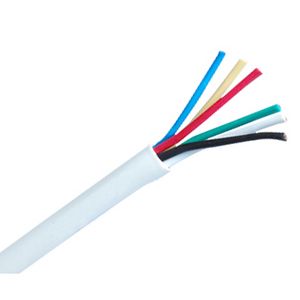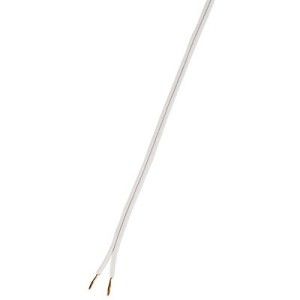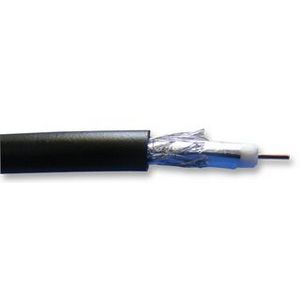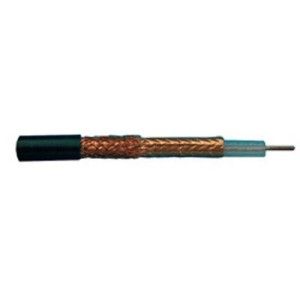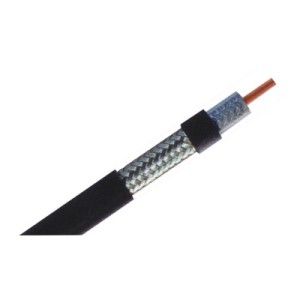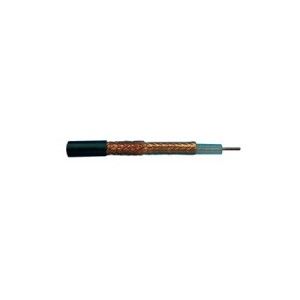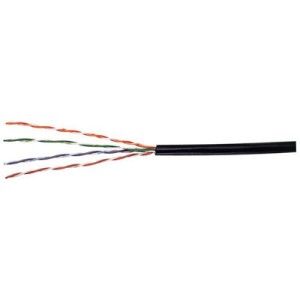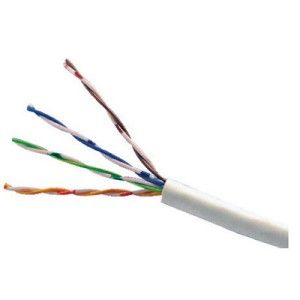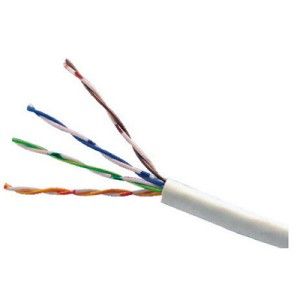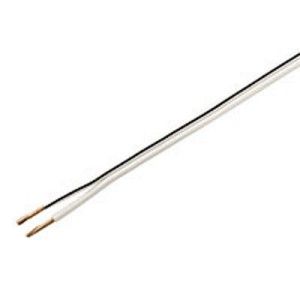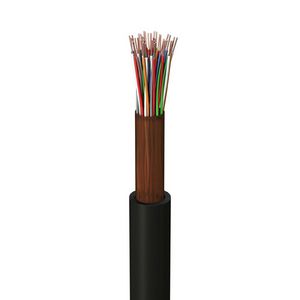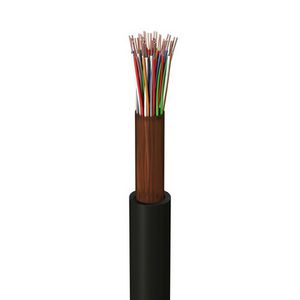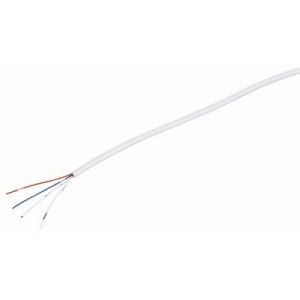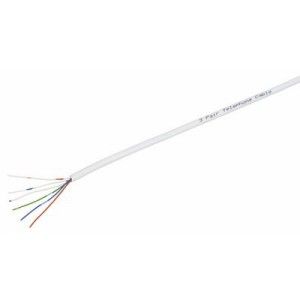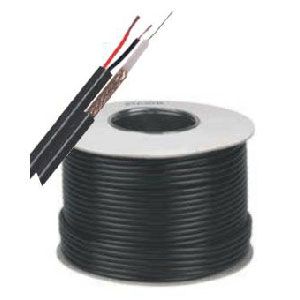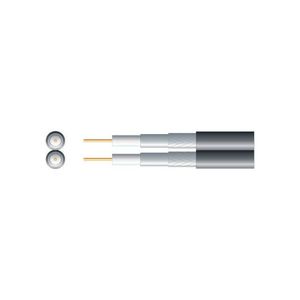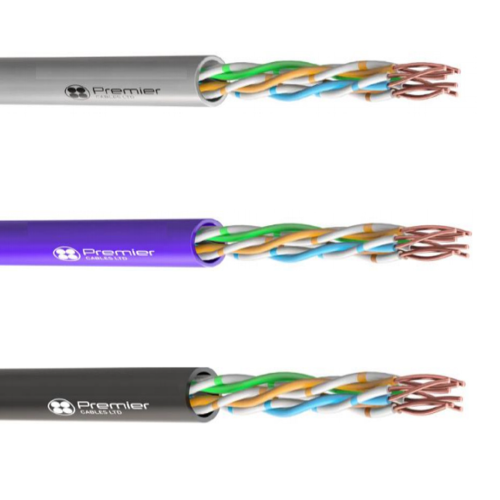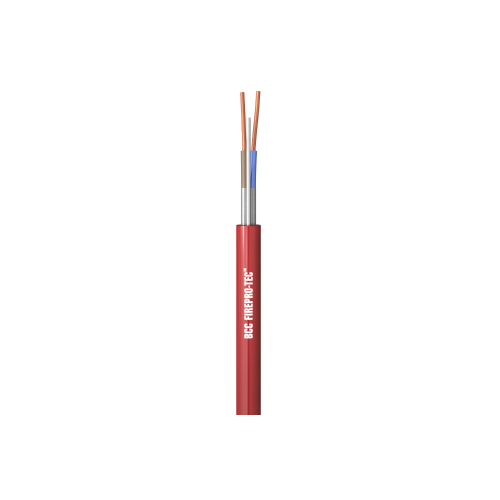Communication Cable
Communication cables are electrical cables used to forward information signals.
Communication Wires and cables are important as they forward information through signals. Communication cables are crucial to all wiring systems. Without communication cables, there will be a major lack of information between electrical systems and devices.
The different types of cable available in this range include:
- Alarm Cable
- Telephone Cable
- Network Cable
- Speaker Cable
- Bell Cable
Coaxial, fibre optic, data & ethernet, and twisted wire pairs are the most prevalent types of communication cables used to convey information signals. Serial, RJ45, and RJ11 are three typical types of communication wires. Many additional communication cables are still available.
Communications cable is used in a wide range of applications including computers, networking, ethernet, industrial and data transmission.
Network Cable is also known as ethernet cables. This type of cable is one of the most popular forms of network cable, often used to provide internet connection, by connecting devices to a local network. The most common use for an ethernet cable is connecting a Wi-Fi router to an entry port or telephone line, whilst offering improved performance.
Many people ask is Wi-Fi or ethernet faster?
The answer is an ethernet connection is generally faster and tends to be more reliable and secure. For example, many businesses use ethernet connections as it is far more difficult for hackers to gain access to the network. Ethernet cables are sometimes called RJ45 cables, as they have an RJ45 connection at each end. ‘RJ’ stands for registered jack, and the ‘45’ refers to the number of the interface standard. RJ45 is a type of connector often used for ethernet networking.
How do I connect Ethernet Cable?
First, you need to plug the ethernet cable into your computer (or another device). Then simply plug the other end of the ethernet cable into one of your hub’s ports. Now, you should have set an ethernet connection, and your computer is ready to browse online.
We stock a wide variety of different types of electrical cable at Meteor Electrical. Shop types of cabling as well as cable management supplies online for next-day delivery!
Communication Cables
Communication Wires and cables are important as they forward information through signals. Communication cables are crucial to all wiring systems. Without communication cables, there will be a major lack of information between electrical systems and devices.
There are several different types of communication cables. These different types of communication cables have their own set of advantages and disadvantages. There are multiple applications with different types of communication cables. Here are some important things to consider about communication cables.
What Are Communication Cables?
A communication cable is a cable that transmits information through a current of numerous frequencies. Communication cables are different from power cables because power cables are manufactured for high currents and high voltages.
Power cables are only used for supplying energy; however, communication cables are different. Communication cables are designed for low currents and low voltage. Communication cables are commonly used for electronic circuits, data transmission, ethernet connections, and networking.
In the simplest terms, a communication cable is electrical cable equipment that transmits information signals between geographically separated areas. These areas can be close to each other or far apart. A well-connected communication cable will send information signals quickly and efficiently regardless of the distance.
At the core of a communication cable is the transmission device. This transmission device differs in different types of communication cables. Some transmission mediums might be optical fibers, twisted wire pairs, or coaxial conductors. A mechanical layer protects the core of the cable against anyone handling the cables. This mechanical structure also protects external environments.
In communication cables, the protective layers ensure the cable handler's safety and allow your communication cables to last a long time. When buying communication cables, look for a communication wire with safety ratings. This will ensure that your cable meets the building's wiring regulation and it minimises the risk of short circuits and fire hazards. Poorly installed or poorly designed cables will disrupt communication, and you will spend a lot of money on repairs.
There are several different types of communication cables and each the different types of communication cables have a specific purpose and application. From ethernet cables to alarm bell cables, Meteor Electrical communicates for every purpose. Visit Meteor Electrical to find a wide range of communication cables.
What Is The Structure Of Communication Cables?
The structure of communication wires depends on their application. Optical communication wires are used in both above-ground and undersea systems. Optical communication cables for above-ground use can be installed in multiple configurations.
The communication cables and wires are installed directly underground, in protective ducts (such as conduits and trunking), or they are installed aerially on ceilings and roofs. The above-ground cables require ample length for strength and to support their weight in shorter geographical spans.
For undersea communication wires and cables, manufacturers add a high-strength steel stand. This strand allows electricians to install undersea cables at ocean depths safely. The longer length of above-ground communication cables also will enable electricians to put the cable into ducts or lay it down in trenches.
Optic fiber communication wires and cables are often used to carry input and output information to computers. Such communication wires and cables are also used to carry data between two computers. In this application, optic communication wires are known as optical data link cables or local-area network cables.
These cables are linked closely to each other for efficient signal transmission. The signals in these communication cables are carried through light pulses. Light pulses are then guided down the optical fiber. In most communication cable applications, two fibers create a complete two-way signal channel.
High-quality pure silica glass in the fiber communication cable reduces light loss for the signals running through the glass fiber structure. The running effect of the fiber isolates light to the core of the glass fiber cable and prevents interference between signals carried amongst different fibers. The guiding effect in communication cables also delivers a strong signal to the far end of the communication cable.
Optical communication wires and cables are commonly used for digital applications due to their structure. The information on optical communication wires and cables is coded into a section of off or on light pulses. A photodetector detects the light pulses from optical wires at the further end of the cable, and this light converts into electronic pulses.
The pulses are amplified, reorganised, and retimed in a decision circuit. At the end of this process, the converted pulses drive the optical transmitter. In the transmitter, a laser mechanism converts the electric signal back into the section of light pulses. This mechanism is strong enough to travel across another communication cable length.
By placing many lengths of communication wires and cables in tandem, the cable system can carry signals efficiently for large geographical spans. Unlike the undersea wiring systems, current optic fibre cable systems use erbium-doped fibre amplifiers to increase the optical signals on longer geographical spans.
The conversion from electronic modes to optical and back is not needed in undersea wiring systems. Coaxial communication cables came out before optical cable systems. Most of the coaxial cable systems are analog. Since there are several communication cable types, these cables have a different structural components than modern communication cables. The current’s amplitude represents signals in coaxial cables. This amplitude represents the signal that will be transmitted.
In a multichannel system, each piece of data signal occupies its unique section of a broadband signal. This broadband signal is carried on a shared coaxial conductor unit. In the transmission terminal, numerous signals are combined in a separate mechanism. This mechanism is called the frequency-division transmitting multiplex equipment.
The combining and separation of signals are commonly found in broadcast radio and television communication cables. This process highlights the structural component of coaxial communication cables.
What Are The Common Applications Of Communication Cables?
There are many varied applications of communication cables. The application differs in different types of communication cables. Here are some common applications of communication wires and cables.
- Computer wiring
- Network wiring
- Voice transmission in wiring
- Ethernet cabling
- Industrial wiring
- Data transmission in wiring
- Fire alarm and suppression system wiring
- Theft and burglary alarm wiring
- Smoke detectors
- Signal monitor systems
What Materials Are Communication Cables Made From?
Since there are different types communication cables, each of the communication cable types is made from different materials. Every material plays a significant part in the application of the communication cable.
Most communication cable jackets are commonly made from gray PVC and black sunlight-resistant polyethylene. These materials are crucial for the protection of your wiring. Extreme sunlight can damage your wiring, especially if your wiring systems face significant sunlight exposure. Ultraviolet radiation from sunlight acts gradually; therefore, it is difficult to detect early signs of deterioration until it's too late.
Prolonged sunlight exposure causes UV rays to deteriorate the primary insulating layer of communication cables. High levels of sunlight exposure accelerate aging in the primary surface of the insulating layer. As a result, the insulation becomes ineffective, and depending on the material; it can become tough.
If the insulation layer becomes tough, it can lead to cracks and cuts on your cables due to mechanical stress. It is necessary for insulation to remain agile to avoid putting mechanical stress on your cabling systems. The mechanical stress from a diminished insulation layer affects the cable core and causes a breakdown in your communication systems.
Deteriorating insulation also changes colour, and it loses its insulating qualities. Most of these changes happen in the outer or surface layers of the cable. Once they are past the surface layers, the physico-chemical characteristic is affected through ultraviolet rays. However, if you don’t fix your cabling at this point, your cable will experience even more damage.
Solar radiation and ozone impact the cable resulting in current leakage and wiring breakdowns. To avoid such events, it is important to look for communication cables with a sunlight-resistant material. Sunlight-resistant cable jackets act as the first line of defense to protect your cabling from sun exposure.
When it comes to the conductor, each communication cable type has multiple options. However, you must look for communication cables with a solid soft, annealed copper conductor to get the best use out of the communication cable.
Hard-drawn copper conductors are far more difficult to work with, and it is difficult to bunch a couple of several wires together with such a conductor. Manufacturers fix this problem by heat-treating the hard copper conductor at the correct temperatures to create a soft and flexible annealed copper conductor.
At the end of the annealing process, you get a copper conductor that is pliable and easy to use. Soft annealed copper conductors also provide better conductivity than hard drawn copper conductors.
Each of the different types of communication comes with different insulations. The most common types of electrical cables insulations are semi-rigid PVC and solid polyolefin. These insulation materials are flexible, and they don’t put a heavy mechanical load on the communication cables. Such insulation also allows easy maneuvering when it comes to installation.
What Are The Different Types Of Communication Cables?
There are several different types communication cables. Each of the communication cable types have specific functions, benefits, and limitations. Here are some of the commonly used communication cable types.
- Fibre optic communication cables
- Coaxial communication cables
- Twisted pair communication cables
Fibre Optic Communication Cables
Fibre optic communication cables consist of a bundle of glass threads, and these communication cable types are used in LAN and WAN. The fibre optic cable has an assembly similar to electrical cables. Each fibre optic cable has multiple strands inside the casing. Each of the glass threads is capable of transmitting information converted into light waves.
Fibre optic communication cable has a complex structure and design. These types of cables have an outer optical jacket that surrounds the light. The jacket traps the light whiting the central optic core. The three main components of fibre optic cables are the core, the cladding, and the casing.
Each of these components plays an important part in the operation of optic communication cables. The core is the inner layer of the cable, and it has a refractive index. The light signal is guided in this section. The next crucial component is cladding. The cladding surrounds the core with another refractive index. The main purpose of the cladding is to keep the light signals in the core instead of any other section.
The casing is the outer layer component, and it keeps the cable conductor protected from hazardous elements. The inside of the cable should be configured in two different methods - the single-mode and the multi-mode.
Even though the difference between the two modes seems small, they make a significant impact on the cable’s performance and its application. Apart from glass fibre optic cables, there are also plastic fibre optic communication cables. The plastic fibre cable is used for shorter communication.
Optical fibre cables transfer data at incredibly high speeds in the glass fibre components. Optic fibre cables also use light pulses instead of electrical pulses to limit the potential hazards of infrared red light in communications.
Multi-Mode Cables VS. Single-mode Cables
Multi-mode optic cables have a larger core diameter, and these cables allow multiple wavelengths of light. These light transmissions go through multiple paths at once.
Multi-mode connections are used over short communication distances as this is the most efficient use of communication signals. Multi-mode optic cables have a lower installation cost; however, these cables have a higher fibre cost.
Single-mode optic cables allow only one type of light to travel at a time through the core component. This process significantly increases the bandwidth of the communication cable. In single-mode fibre optic cables, the number of light signals in the core is less reactive and has low attenuation.
This structure allows information to travel farther and further. Single-mode communication cables are highly efficient, and they have lower communication losses. However, these cables come with a higher installation cost. Even though these cables have a higher cost, they provide improved results compared to multi-mode cables.
Coaxial Communication Cables
Coaxial communication cables are a type of cable with multiple layers. Coaxial cables have a conductor, and this conductor acts as the core. The core carries radio frequency signals in coaxial cables.
The core wires of coaxial cables can be a single solid conductor, or they can have multi strands of twisted cables. A dielectric insulator surrounds the core in coaxial cables. The dielectric insulator separates the outer copper braided mesh component from the inner conductor. The copper mesh covers the dielectric insulator, and the mesh sometimes has a braided or foil configuration.
The unique design of coaxial cables allows them to install next to metal objects, and this cable reduces the frequency of power losses that happen in other types of transmission lines. The dielectric insulator is designed with polyethylene foam which reduces ohm losses when the cable makes contact with the conductor. The outer jacket of the coaxial cable protects the cable from mechanical and environmental damage.
The coaxial cable acts as a high-frequency transmitter cable and has a single solid copper core. Coaxial cables have 80 times more transmission capacity than other cables. Coaxial cables are mainly installed in feedlines connecting radio transmitters and receivers. The cable connects the antennas, computer network signals, and cable television signals.
Twisted Pair Communication Cables
Twisted pair communication cables are an ordinary wiring system that connects households and commercial computers with their telephone connection. Twisted pair communication cables are made by combining two separate insulated wires together. Their wires are configured in a twister pattern, and they are put parallel to each other.
The twisted setting reduces electromagnetic induction or crosstalk between the pair of wires. Twisted pair communication cables work best for transferring balanced signals. This method of signal transmission dates back to the time of early radio and telegraphs.
There are two common twisted pair communication cable types. Twisted pair cables improve the signal-to-noise ratio, ground bounce, and crosstalk to bring out a balanced transmission signal. These qualities are valuable for wide bandwidth and high fidelity.
These types are based on the shielding layer of the cable; therefore, the two cables are shielded twisted pair cable and unshielded twisted pair cable. A shielded twisted pair cable allows a higher transmission rate than the unshielded cable. The shielded twisted cable works best for token ring networks. This cable type also has an easy installation making it an ideal choice for many electricians.
The shielded twisted pair cable also has a higher signal carrying capacity company to the unshielded cable. However, due to the advanced capabilities of shielded cables, they are more expensive and have a bigger diameter which will make installation difficult in some locations.
Apart from the token ring network, shielded cables are also used in industrial applications as an instrumentation cable. This cable is also used in harsh hot and cold environments.
The unshielded twisted pair cable is more suitable for ethernet cabling systems. The Unshielded twisted cables use no extra shielding material such as an aluminium foil or mesh as this adds bulk to the cable.
FAQ's
- Is a networking cable the same as ethernet cable?
- Which cable is used for data communication?
- What are the different types of communication cables?
- What is alarm cable?
- What is the best cable to wire CCTV systems?

